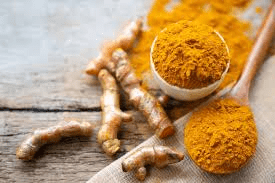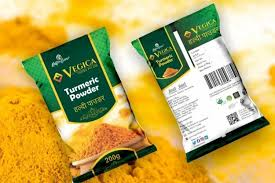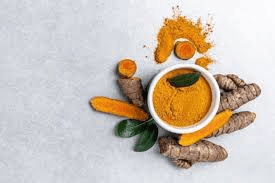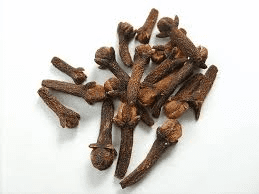Turmeric is a vibrant yellow spice that comes from the root of the Curcuma longa plant. It’s commonly used in cooking, especially in Indian cuisine, for its color and distinct flavor. Beyond the kitchen, turmeric has gained popularity for its potential health benefits, including anti-inflammatory and antioxidant properties. Processing, packaging, and exporting turmeric involve several steps to ensure the spice remains fresh and retains its quality.
The process of preparing turmeric starts with harvesting the mature roots of the turmeric plant. These roots are usually dug up by hand and then washed thoroughly to remove any soil or debris. After washing, the roots are boiled in water for about 45 to 60 minutes. Boiling helps to soften the roots and make them easier to dry. It also helps to preserve the color and flavor of the turmeric.
Once boiled, the turmeric roots are spread out in a single layer and left to dry. Drying can be done in the sun or using a mechanical dryer, depending on the weather conditions and resources available. Sun drying typically takes about 7 to 10 days, while mechanical drying can be faster. It’s crucial to ensure that the roots are completely dry before moving to the next step, as any moisture can lead to mold growth and spoilage.
After drying, the turmeric roots are cleaned again to remove any remaining dirt or impurities. The next stage is grinding the dried roots into a fine powder. This can be done using a mill or grinder. The resulting powder is then sieved to remove any larger particles and ensure a uniform texture. The powder is often mixed with a small amount of an anti-caking agent to prevent clumping and maintain its quality during storage.
Proper packaging is essential to preserve the quality of turmeric powder. The spice should be packed in moisture-proof and airtight containers to protect it from humidity, light, and air, which can degrade its flavor and color. Common packaging materials include foil pouches, plastic jars, and glass containers. Each type of packaging has its advantages; for example, foil pouches are often used for their ability to keep moisture out and protect against light.
Labeling is also an important part of the packaging process. Labels should include information such as the product name, net weight, ingredients, and expiry date. For export purposes, additional details like the country of origin, batch number, and certification marks may be required. Accurate labeling helps ensure compliance with international standards and regulations.
Exporting turmeric involves several steps to ensure that the product meets the requirements of the destination country. The first step is to prepare the necessary documentation. This usually includes a commercial invoice, packing list, and a certificate of origin. Some countries may also require a phytosanitary certificate, which confirms that the turmeric has been inspected and is free from pests and diseases.
Before exporting, it’s essential to understand the regulations and standards of the target market. Different countries have varying requirements for spices, including specific quality standards, packaging, and labeling rules. Researching these requirements beforehand helps avoid any issues during the export process.
Once the documentation is in order, the turmeric is shipped to the destination country. This can be done via sea, air, or land, depending on the distance and urgency of the delivery. During transit, it’s important to ensure that the turmeric is kept in conditions that prevent moisture and contamination.
Upon arrival in the destination country, the turmeric may be subject to inspection by customs authorities. They will check the documentation and may also examine the product to ensure it meets local standards. Once cleared, the turmeric can be distributed to wholesalers, retailers, or directly to consumers.
Processing, packaging, and exporting turmeric requires careful attention to detail at each stage. From harvesting and drying the roots to grinding them into powder, packing the spice properly, and ensuring compliance with export regulations, every step plays a crucial role in maintaining the quality of turmeric. By following these procedures, producers and exporters can ensure that their turmeric reaches consumers in the best possible condition, preserving its flavor, color, and potential health benefits.
How to Process Turmeric for Exportation

1. Harvesting: Turmeric is harvested from mature plants, usually around 7-10 months after planting. Ensure that the turmeric rhizomes are fully grown and have a rich orange color. Harvesting too early can result in lower quality.
2. Cleaning: After harvesting, clean the turmeric rhizomes thoroughly to remove any soil or debris. This can be done by washing them in water and scrubbing them gently. Proper cleaning is crucial to avoid contamination.
3. Boiling: Boil the cleaned rhizomes in water for about 45-60 minutes. This step helps in removing the raw taste and makes the turmeric easier to dry. Ensure the water is at a rolling boil for the best results.
4. Drying: After boiling, spread the turmeric rhizomes on a clean surface and dry them in the sun. Depending on the weather, this process can take several days. Ensure the rhizomes are fully dried before storing to prevent mold growth.
5. Polishing: Once dried, polish the turmeric rhizomes to remove any remaining outer skin. This can be done using a polishing machine or manually. Polished turmeric has a more attractive appearance and is preferred for export.
6. Grading: Grade the turmeric based on size, color, and quality. This step involves sorting the rhizomes into different categories to meet the export standards. High-quality turmeric should be bright orange and free from defects.
7. Packaging: Pack the graded turmeric in clean, dry, and airtight bags or containers. Ensure that the packaging material is suitable for long-distance transport and complies with export regulations.
8. Labeling: Label each package with relevant information such as origin, grade, and batch number. Accurate labeling is essential for traceability and compliance with international standards.
9. Quality Testing: Conduct quality tests on samples to ensure the turmeric meets export standards. Tests may include checking for moisture content, color, and purity. Only proceed with export if the turmeric passes these tests.
10. Documentation: Prepare all necessary documentation for export, including phytosanitary certificates, export licenses, and invoices. Proper documentation ensures smooth customs clearance and legal compliance.
Raed Also:Rose Chafer: Description, Damages Caused, Control and Preventive Measures
How to Package Turmeric for Exportation

1. Choose Packaging Material: Select high-quality packaging material that protects turmeric from moisture, pests, and contamination. Options include food-grade plastic bags, jute sacks, or cardboard boxes.
2. Prepare Packaging: Clean and sanitize all packaging materials before use. This step prevents any contamination and ensures the turmeric remains fresh and uncontaminated during transport.
3. Fill Packages: Carefully fill the cleaned and graded turmeric into the chosen packaging. Avoid overfilling or underfilling to ensure uniform weight and quality of the packages.
4. Seal Packages: Properly seal the packages to protect the turmeric from environmental factors. Use heat-sealing methods for plastic bags or ensure that jute sacks are tightly closed.
5. Label Packages: Clearly label each package with necessary information including the product name, grade, origin, and batch number. Accurate labeling is important for identification and regulatory compliance.
6. Check for Damage: Inspect each package for any signs of damage or defects. Damaged packages can affect the quality of the turmeric and may result in rejection during export.
7. Arrange for Storage: Store the packaged turmeric in a clean, dry, and well-ventilated area until it is ready for export. Proper storage conditions help maintain the quality and freshness of the turmeric.
8. Prepare for Shipment: Ensure that the packaged turmeric is ready for shipment by organizing it for easy loading and unloading. Check that all packages are secure and ready for transport.
9. Documentation: Include all necessary export documentation with the packages. This includes invoices, packing lists, and any required certificates. Proper documentation facilitates smooth customs procedures.
10. Compliance Check: Verify that the packaging meets all relevant export regulations and standards. Ensure that the packaging complies with both the country of origin and the destination country’s requirements.
How to Export Turmeric for Profits
1. Market Research: Conduct thorough market research to understand demand, pricing, and competition in the target export markets. Identifying the right markets helps in positioning your turmeric competitively.
2. Find Buyers: Establish connections with potential buyers or distributors in the target markets. Attend trade fairs, use online platforms, and network within the industry to find reliable partners.
3. Understand Regulations: Familiarize yourself with export regulations, including quality standards, customs requirements, and import regulations in the destination country. Compliance with these regulations is essential for successful export.
4. Set Competitive Pricing: Determine a competitive pricing strategy based on market research and cost analysis. Ensure that your pricing covers production costs and provides a reasonable profit margin.
5. Negotiate Contracts: Negotiate contracts with buyers that clearly outline terms of sale, payment conditions, and delivery schedules. Ensure that all terms are agreed upon and documented to avoid misunderstandings.
6. Secure Financing: Arrange for financing options to manage cash flow and cover export-related expenses. This may include securing export credit insurance or trade financing.
7. Logistics Management: Plan and manage the logistics of exporting turmeric, including transportation, warehousing, and distribution. Efficient logistics ensure timely delivery and reduce costs.
8. Monitor Quality: Continuously monitor the quality of turmeric to maintain consistency and meet export standards. Regular quality checks and improvements help build a strong reputation in the market.
9. Promote Your Product: Use marketing strategies to promote your turmeric in the target markets. This can include online advertising, trade shows, and direct marketing to increase visibility and attract buyers.
10. Evaluate Performance: Regularly evaluate the performance of your export business, including sales, profits, and customer feedback. Use this information to make improvements and adapt strategies for better results.
Raed Also: Actinomycosis (lumpy jaw): Description, Damages Caused, Control and Preventive Measures
Frequently Asked Questions (FAQ’s) About Turmeric

1. What is turmeric? Turmeric is a spice derived from the root of the Curcuma longa plant. It is commonly used in cooking and traditional medicine due to its vibrant color and health benefits.
2. What are the health benefits of turmeric? Turmeric has anti-inflammatory and antioxidant properties, which can help reduce inflammation, improve digestion, and support overall health.
3. How is turmeric processed for export? Turmeric is harvested, cleaned, boiled, dried, polished, graded, packaged, labeled, and tested before export. Each step ensures the quality and safety of the product.
4. What are the different grades of turmeric? Turmeric grades vary based on size, color, and quality. Common grades include high-quality, premium, and standard, with specific standards for each.
5. How should turmeric be stored? Turmeric should be stored in a cool, dry place away from direct sunlight and moisture. Proper storage helps maintain its quality and shelf life.
6. What are the best markets for exporting turmeric? Key markets for turmeric include the United States, Europe, and parts of Asia. Researching market demand and regulations in these regions is essential for successful export.
7. How is turmeric packaged for export? Turmeric is packaged in food-grade plastic bags, jute sacks, or cardboard boxes. Packaging should be secure and protect the turmeric from contamination and damage.
8. What are common challenges in exporting turmeric? Common challenges include meeting quality standards, navigating regulatory requirements, managing logistics, and finding reliable buyers.
9. How can I find buyers for my exported turmeric? Finding buyers can be done through trade fairs, online platforms, industry networks, and by building relationships with distributors and importers.
10. What are the costs associated with exporting turmeric? Costs include production, processing, packaging, transportation, customs fees, and marketing expenses. Accurate cost management is crucial for profitability.
Read Also: Complete Composting Guide for Beginners

